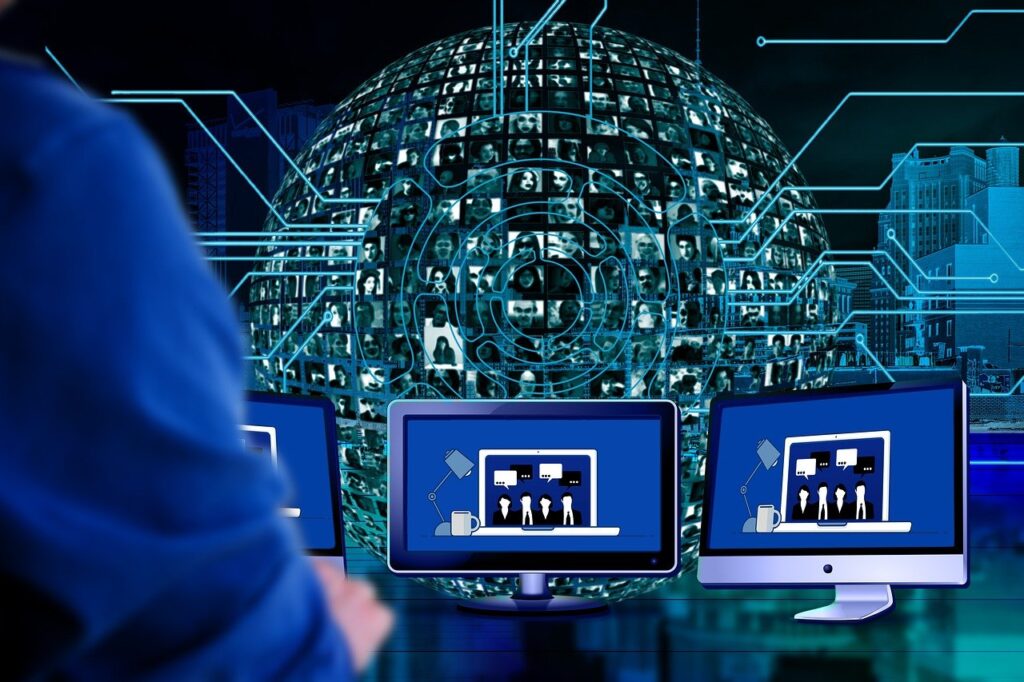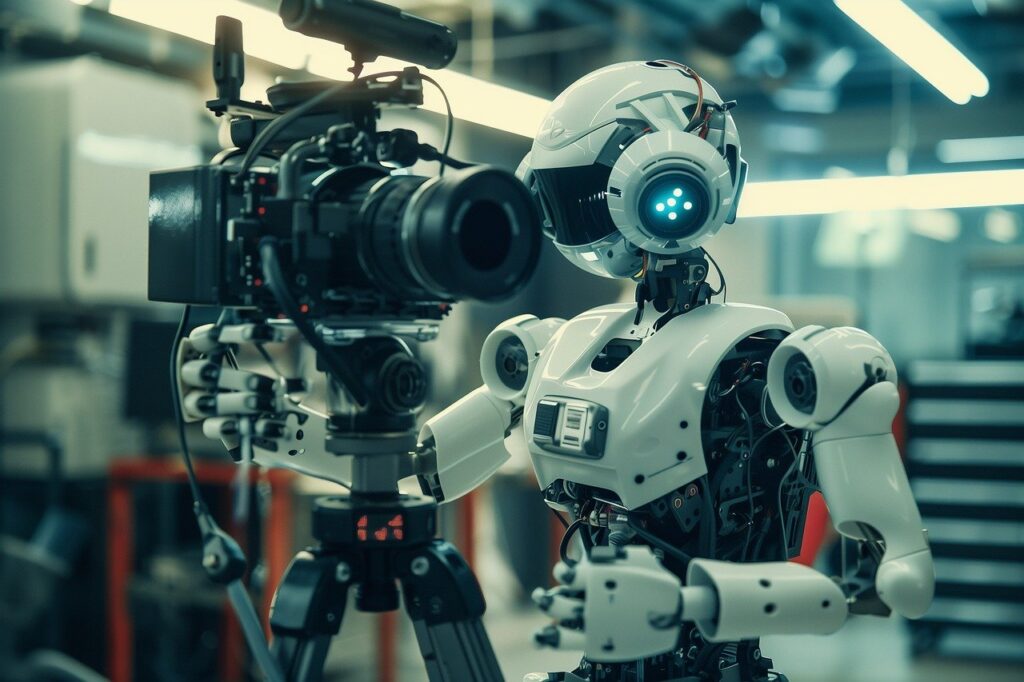AI Video Dubbing: Why Human Expertise is Still Essential for Quality Results
Introduction to AI Video Dubbing with Human Input
Definition of AI Video Dubbing and How It Streamlines Content Creation
AI video dubbing refers to the use of artificial intelligence to automate the process of translating and replacing spoken dialogue in video content with voiceovers in different languages. This technology has rapidly gained traction in content creation due to its ability to save time and reduce costs compared to traditional dubbing methods. AI tools can quickly generate translated scripts, match voiceovers with on-screen actions, and produce multiple language versions of a video with minimal manual intervention. For content creators working with tight deadlines or limited budgets, AI dubbing is a powerful tool for reaching international audiences efficiently.
However, despite the convenience and speed offered by AI, it’s important to recognize that the technology still has limitations. While AI can handle straightforward translations and basic voiceovers, it often struggles with more complex language nuances, emotional delivery, and cultural sensitivities that are crucial to creating an engaging and authentic experience for viewers. This is where human expertise becomes essential.
The Role of Human Expertise in Ensuring Quality and Accuracy in AI-Powered Dubbing
AI video dubbing, while impressive, is not infallible. It may misinterpret subtle linguistic cues or fail to grasp the emotional depth required in voiceovers. Human expertise plays a pivotal role in refining AI-generated results, ensuring that the final product is polished and accurately reflects the original content’s intent.
Professional dubbing services bring in experienced translators and voice actors to enhance the AI’s output. Translators can adjust AI-generated scripts to better fit the context, tone, and cultural nuances that an automated system may miss. Similarly, skilled voice actors provide the emotional resonance and personality that AI-generated voices cannot fully replicate. They ensure that characters sound natural and that their dialogue aligns with the tone and pace of the original content.
Additionally, human professionals ensure that the dubbing matches lip movements and timing correctly, creating a seamless viewing experience. Without this fine-tuning, viewers can quickly notice inconsistencies that break immersion, especially in entertainment and educational content where emotional connection is vital.
Why AI Needs Human Expertise in the Dubbing Process

Language Nuances: How AI Can Miss Context and Cultural Subtleties
Although AI has made great strides in language translation, it still lacks the ability to fully understand the nuances, context, and cultural subtleties of human languages. Language is not just about words—it’s about tone, intent, and cultural relevance. AI algorithms often rely on literal translations, which can lead to awkward phrasing or incorrect interpretations of idiomatic expressions. For example, an AI might translate a phrase word-for-word, but miss the humor, irony, or emotional tone behind it.
Human translators, on the other hand, understand the cultural context in which the original content was created and the subtleties of the target language. They can adjust the dialogue to ensure that it resonates with the audience, while maintaining the intent and emotion of the original script. This is especially important in content where the subtleties of language—like sarcasm, humor, or emotional undertones—play a significant role in engaging the viewer.
Voice Acting: The Irreplaceable Emotion and Personality That Human Voice Actors Bring
One of the biggest challenges in AI video dubbing is replicating the depth of human emotion. While AI-generated voices can mimic speech patterns, they often sound flat and mechanical, lacking the emotional inflections and personality that a skilled voice actor can provide. Human voice actors bring a unique emotional range to their performances, from the subtle changes in tone to the dramatic shifts in pitch that convey excitement, sadness, or tension. These emotions are crucial for creating an authentic and engaging experience for viewers, especially in entertainment and storytelling.
For example, a suspenseful scene in a film requires more than just words—it needs the voice actor to convey fear, urgency, or anxiety. AI can’t yet match this level of emotional depth, which is why human voice actors are essential in dubbing projects. They bring the characters to life, ensuring that the audience connects with the narrative on a deeper emotional level.
Lip-Syncing and Timing: Why Humans Are Crucial for Making Sure Dubbing Matches the Original Video’s Visual Flow
In addition to capturing the emotional essence of a performance, the technical aspect of lip-syncing and timing is another area where AI needs human assistance. Dubbing is not just about translating dialogue; it also involves syncing the new audio track to the characters’ lip movements and on-screen actions. AI can perform basic syncing, but it often falls short when it comes to matching the timing of speech to the visuals, leading to noticeable mismatches between the spoken words and the characters’ mouth movements.
Human professionals step in to fine-tune the dubbing, ensuring that the dialogue flows naturally with the original visual cues. This process requires attention to detail and a deep understanding of both the original language and the target language. Skilled dubbing experts can adjust the pacing of the translated script, so it aligns perfectly with the visual timing, creating a seamless experience for viewers.
In some cases, they may need to creatively modify the script to ensure that the dubbed lines fit within the time constraints of the original footage. This fine-tuning is something that AI struggles to handle, as it requires both linguistic expertise and a keen sense of timing that only human professionals can provide.
How Dubbing Services Can Enhance AI-Generated Dubbing
Professional Quality Control: Ensuring that the AI’s Output Is Polished and Natural
AI video dubbing can provide a quick, cost-effective solution, but the raw output often requires a layer of human refinement to ensure it meets professional standards. This is where dubbing services play a crucial role. Professional quality control teams can review AI-generated dubs to ensure that the audio flows naturally and that the translated dialogue captures the original tone and meaning of the content. Without this oversight, AI dubbing may sound robotic, lack proper intonation, or even misinterpret the original context.
Dubbing professionals can identify areas where AI may have produced unnatural-sounding dialogue, awkward pauses, or timing issues. By fine-tuning the audio, they can transform AI’s initial output into a polished product that feels more authentic and natural to the target audience. This added layer of quality control ensures that AI dubbing maintains the professional standards expected by viewers, helping to preserve the integrity of the content.
Refining Translations: How Human Translators Can Correct AI-Generated Scripts
Even though AI can quickly translate scripts, it often falls short in terms of accuracy and cultural appropriateness. AI tends to translate text too literally, which can result in awkward or incorrect phrasing, especially when dealing with idiomatic expressions, jokes, or region-specific references. This is where human translators are invaluable.
Professional dubbing services employ skilled translators who can refine the AI-generated scripts, ensuring that the translated dialogue fits seamlessly into the context of the video. They correct any inaccuracies, adjust the tone to match the original intent, and make cultural adaptations that resonate with the target audience. For example, a joke in one language may not work in another without proper localization. Human translators can adapt these instances creatively, ensuring that the humor or emotion is maintained without losing its impact in translation.
By involving human translators in the process, dubbing services ensure that AI-generated content maintains its authenticity and clarity, while being appropriately tailored to the audience’s linguistic and cultural expectations.
Voiceover Coordination: Professional Voice Actors Delivering the Final Touch to AI-Generated Content
While AI can generate voiceovers, they often lack the emotional depth and nuance that professional voice actors bring to the table. Human voice actors have the ability to convey a wide range of emotions, subtle shifts in tone, and character dynamics that AI simply cannot replicate at this point. Dubbing services add value by coordinating skilled voice actors who can bring AI-generated scripts to life with their unique performances.
Voice actors can also ensure that the dialogue fits the pacing and rhythm of the original content, providing a more immersive and engaging experience for the audience. Their ability to synchronize their performances with the visuals, maintain consistent character voices across scenes, and infuse personality into the characters makes all the difference. With professional voice actors, the final dubbed product not only sounds natural but also connects emotionally with the viewers.
In essence, AI can handle the technical side of dubbing, but it is the human voice actors who deliver the final touch, ensuring that the dubbed version retains the heart and soul of the original conten
The Perfect Balance: Combining AI and Human Expertise for the Best Results

Efficiency from AI, Accuracy from Humans: Why Blending the Two Produces the Best Results
AI video dubbing offers speed and automation, allowing content creators to dub videos in multiple languages quickly and efficiently. However, while AI excels in processing large volumes of content rapidly, it lacks the nuanced understanding that only human expertise can provide. The ideal approach to video dubbing combines the efficiency of AI with the accuracy and creativity of human professionals. This collaboration ensures that the final product is not only delivered on time but also retains the authenticity and emotional depth of the original content.
AI can handle the bulk of the labor-intensive tasks, such as script generation, lip-syncing, and basic voiceovers, reducing the amount of manual work required. Meanwhile, human experts refine and polish the output, correcting errors, enhancing the translation, and adding emotional resonance. This perfect blend allows content creators to achieve high-quality dubbing without sacrificing speed or accuracy, ensuring that audiences receive a seamless, engaging experience in their native language.
Cost-Effectiveness of AI-Driven Dubbing with Human Enhancement
One of the biggest advantages of combining AI and human expertise is cost-effectiveness. Traditional dubbing processes can be expensive, especially when dealing with multiple languages or long-form content. AI-driven dubbing significantly reduces the initial costs by automating much of the technical work, such as creating voiceovers and syncing them with video.
However, without human intervention, the results may fall short of professional standards. By incorporating human translators, voice actors, and quality control specialists, content creators can enhance the AI’s output without breaking the bank. This hybrid approach allows creators to maximize their budget, using AI to manage large-scale projects while allocating resources strategically for human enhancements that ensure the final product meets professional expectations.
In many cases, dubbing services that combine AI with human expertise offer packages that are more affordable than traditional dubbing alone, allowing creators to get the best of both worlds: the cost-saving benefits of AI with the high-quality results driven by human professionals.
Examples of Successful AI-Human Collaboration in Dubbing Projects
Several high-profile content platforms and creators have already demonstrated the success of blending AI with human expertise in dubbing. For example, Netflix has explored AI-assisted dubbing for some of its international shows. While AI handles the initial script generation and voiceover, human translators and voice actors step in to refine the output, ensuring that the dubbed content maintains the same emotional and cultural impact as the original. This hybrid approach has allowed Netflix to expand its global reach rapidly while maintaining high-quality dubbing across different markets.
Similarly, YouTube content creators who produce multilingual educational videos have started to adopt AI-driven dubbing tools like Papercup to generate translations quickly. However, they still rely on human voice actors to deliver the final performance, ensuring that the voiceover feels natural and engaging. This approach has enabled creators to produce content in multiple languages at a fraction of the cost, while still delivering professional-quality results.
These examples highlight the growing trend of AI-human collaboration in dubbing projects. By leveraging the strengths of both AI and human experts, content creators can deliver multilingual content that is efficient, cost-effective, and maintains the authenticity needed to connect with global audiences.
Choosing a Dubbing Service to Maximize AI’s Potential
Key Considerations When Selecting a Dubbing Service That Integrates AI and Human Expertise
As AI video dubbing continues to evolve, it’s crucial to choose a dubbing service that effectively integrates both AI technology and human expertise. Not all dubbing services offer the right balance between these two elements, so it’s important to assess key factors when making your choice.
AI-Driven Efficiency: Look for a service that uses cutting-edge AI technology to streamline the dubbing process. The AI should handle tasks like script generation, voice syncing, and producing initial voiceovers with speed and accuracy. Check whether the AI technology employed is up-to-date and capable of delivering high-quality results across multiple languages.
Human-Led Quality Control: Ensure the service includes professional translators, voice actors, and sound engineers who review and refine the AI’s output. Human experts play a critical role in correcting translation inaccuracies, adding emotional depth to the performance, and ensuring that lip-syncing is flawless. A service that combines the strengths of AI and human oversight guarantees the best possible outcome.
Customization Options: Every project is unique, so the dubbing service should offer flexibility. Can they tailor the voice actors to match your brand or characters’ personalities? Do they provide cultural adaptation to make your content relatable to different regions? A good service will be able to adjust the AI-generated content based on your specific needs.
Affordability and Scalability: The beauty of AI-driven dubbing is its cost-effectiveness, especially when paired with selective human intervention. Make sure the service you choose offers competitive pricing, taking advantage of AI’s efficiency without compromising on quality. Additionally, consider how well the service can scale with your project’s needs—whether you’re dubbing a single video or creating multilingual content at scale.
Why Professional Dubbing Services Remain Essential for Global Content Success
While AI has transformed the dubbing landscape by offering faster and more affordable solutions, professional dubbing services remain indispensable for creators aiming for global success. Here’s why:
Cultural and Linguistic Accuracy: AI may handle the technical aspects of dubbing, but professional dubbing services ensure cultural relevance and linguistic accuracy. Human experts know how to localize content—making necessary adjustments to the language, tone, and cultural references so that the dubbed content resonates with international audiences. Without this human touch, AI-generated dubbing could fall flat, missing important context or cultural nuances.
Emotional Impact and Viewer Engagement: AI-generated voiceovers, while improving, still lack the emotional depth that professional voice actors bring. Human voice actors infuse characters and dialogue with personality, emotion, and tone, helping your content engage and connect with viewers on a deeper level. This emotional engagement is crucial, especially in entertainment, educational, or promotional videos where the message needs to strike a chord with the audience.
Professional Standards and Quality Assurance: AI may be fast, but it’s human professionals who guarantee that the end product meets high standards. Whether it’s fine-tuning the timing of dialogue with on-screen action, perfecting the synchronization of lip movements, or ensuring clarity in voiceovers, professional dubbing services apply the necessary refinements to deliver polished content. This level of quality is vital for building trust with your audience and presenting your brand in the best possible light.
Global Reach and Market Expansion: Expanding your content to global markets requires more than just translating the words; it’s about creating an experience that feels authentic and relatable to each audience. Professional dubbing services that integrate AI with human expertise provide the best chance of success in international markets. They ensure that your content maintains its original integrity while being adapted to the languages, cultures, and preferences of diverse audiences.
In conclusion, AI technology offers incredible opportunities for making dubbing more efficient and accessible, but it’s the human element that ensures the final product is accurate, engaging, and culturally relevant. When selecting a dubbing service, choose one that harnesses the power of AI while leveraging human expertise to guarantee the best results for your global content strategy.

